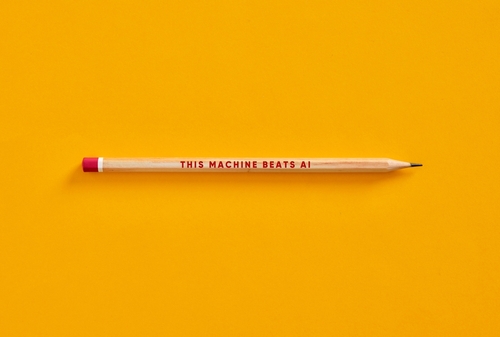There is no doubt that Generative AI is going to impact our professional lives big time. However, the more time I spend on such projects, experiments, and discussions, I discover that one of the biggest things that will need to be addressed is the UI. Gen AI is transforming industries by enabling the creation of text, images, videos, and other forms of content with unprecedented speed and efficiency. However, its true potential can only be unlocked through an effective user interface (UI) layer. A great UI layer bridges the gap between complex AI systems and end-users, ensuring accessibility, usability, and meaningful interaction. This really got me thinking and hence I started exploring what a great UI layer for generative AI might look like, why it is essential, and its likely impact on user experience.
The business case for generative UI is becoming increasingly compelling:
- McKinsey & Company predicts that AI-driven automation in design could generate approximately $300 billion in value by 2030.
- The market for generative AI in design is projected to have a $13.9 billion impact across industries.
- 34.6% of users now expect businesses to craft personalized content that suits their interests, making generative UI essential for meeting these expectations.
What Will a Great UI Layer for Generative AI Look Like?

A great UI layer for generative AI will prioritize simplicity, adaptability, and personalization. Here are some key characteristics it is likely to exhibit:
- Dynamic and Context-Aware Interfaces
Generative AI interfaces will dynamically adapt to users’ needs in real time. For example, instead of static menus or rigid workflows, the interface might suggest actions or display tools based on the user’s intent and context. This outcome-oriented design approach focuses on achieving user goals rather than presenting predefined options. - Declarative Interaction
Instead of traditional imperative interfaces where users perform step-by-step actions (e.g., clicking buttons), declarative interfaces will allow users to express their desired outcomes directly. For instance, users could type or voice commands like “Generate a marketing campaign targeting young adults,” and the system would deliver tailored results. - Personalization
Leveraging user behavior data, generative AI UIs will create highly personalized experiences. For instance, e-commerce platforms could dynamically adjust layouts or recommend products based on individual preferences. Personalization will also extend to visual elements like color schemes or typography that match user preferences. - Multi-Modal Interactions
The UI layer will support multiple input methods such as text prompts, voice commands, and even gestures. Voice User Interfaces (VUIs) will play a significant role in enabling hands-free and conversational interactions. - Enhanced Accessibility
Accessibility features powered by AI will ensure inclusivity for users with diverse abilities. Generative AI can identify potential accessibility barriers in real-time and suggest improvements to make digital platforms more usable for everyone. - Feedback Loops
A great UI layer will incorporate mechanisms for continuous learning from user feedback. By analyzing interactions, the system can refine its outputs over time to better align with user expectations.
Why Is a Great UI Layer Important?
The significance of an effective UI layer for generative AI cannot be overstated. Here’s why it matters:
- Bridging Complexity
Generative AI is inherently complex due to its reliance on large datasets and advanced algorithms. A well-designed UI layer simplifies this complexity, making the technology accessible to non-technical users. - Facilitating Adoption
User-friendly interfaces encourage adoption by minimizing the learning curve associated with generative AI tools. For example, intuitive designs can help small businesses or individuals leverage AI without requiring deep technical expertise. - Enhancing User Trust
Transparency in how generative AI operates—such as showing how outputs are generated or allowing users to control parameters—builds trust among users. A great UI ensures that users feel in control of the technology rather than overwhelmed by it. - Driving Engagement
Engaging interfaces that adapt to user preferences improve satisfaction and retention rates. For instance, personalized recommendations or streamlined workflows keep users engaged by reducing friction in achieving their goals. - Addressing Ethical Concerns
A robust UI layer can mitigate issues like bias or misinformation by providing users with tools to review and refine outputs before use. Features such as editable prompts or contextual explanations can empower users to make informed decisions.
Impact on User Experience
The introduction of a sophisticated UI layer for generative AI is poised to revolutionize user experience across various domains:
- Seamless Interactions
By automating repetitive tasks and offering intelligent suggestions, generative AI UIs enable seamless workflows. For example, designers can quickly generate multiple prototypes without manual effort, focusing instead on creativity and strategic decision-making. - Hyper-Personalized Experiences
Generative AI interfaces analyze vast amounts of user data to deliver hyper-personalized content and interactions. This leads to more relevant recommendations, higher engagement rates, and improved overall satisfaction. - Faster Prototyping and Ideation
In creative fields like design or content creation, generative AI UIs drastically reduce time-to-market by automating ideation processes. Designers can explore diverse concepts rapidly without being bogged down by technical constraints. - Increased Accessibility
Features like voice commands or real-time accessibility enhancements ensure that generative AI tools are usable by a broader audience, including those with disabilities. - Continuous Improvement
The feedback-driven nature of generative AI UIs ensures that they evolve alongside user needs and preferences, delivering increasingly refined experiences over time. - Cross-Industry Applications
From healthcare to education and finance, the impact of generative AI UIs will extend across industries by enabling smarter decision-making tools tailored to specific use cases.
Challenges and Future Directions
While the potential benefits are immense, implementing a great UI layer for generative AI comes with challenges:
- Contextual Understanding: Current models often struggle with maintaining context in long interactions or understanding nuanced queries.
- Bias Mitigation: Ensuring ethical outputs requires robust mechanisms within the interface to detect and address biases in real-time.
- User Control: Providing adequate customization options without overwhelming users remains a delicate balance.
- Data Privacy: Safeguarding sensitive user data while delivering personalized experiences is critical for trust-building.
Looking ahead, advancements in machine learning algorithms and human-centered design principles will likely address these challenges. The future of generative AI UIs lies in creating systems that are not only functional but also empathetic—anticipating user needs while respecting their individuality.
Additional Considerations
Building on our previous discussion, it’s important to highlight a few more key points:
- Outcome-Oriented Design Approach
Recent developments in generative UI are pushing the industry toward an outcome-oriented design approach. This involves:- Orchestrating experience design with a greater focus on user goals and final outcomes.
- Moving from an imperative, point-and-click style of design to a more declarative approach where users can simply state what they want.
- Working with AI as a “design copilot” that can read design briefs or refine narratives.
- Enhanced Creativity and Innovation
Generative AI serves as a powerful tool for designers, acting as a “design copilot” to generate multiple design variations and inspire creativity. This can lead to more innovative solutions and push the boundaries of design possibilities. - Data-Driven Design Decisions
AI-powered analytics will increasingly inform design choices, leveraging vast amounts of user data to provide actionable insights. This data-driven approach leads to more effective and user-centric designs. - Evolving Role of Designers
As generative AI becomes more integrated into the design process; the role of designers will evolve to focus more on strategic thinking and overseeing AI-generated outputs. This shift requires designers to adapt their skills and processes to harness the full potential of generative AI.
Generative UI is already transforming various sectors:
- Accelerated Prototyping: Tools like Uizard and Figma’s AI features allow designers to generate multiple high-fidelity UI prototypes based on a single set of requirements.
- Accessibility Enhancements: AI tools like Microsoft’s AI for Accessibility can automatically generate UI elements that comply with accessibility standards.
- Data Visualization: Transforming raw data into interactive charts and dashboards that adapt to user preferences or changes in the data.
- E-commerce: Creating personalized shopping experiences with dynamically adjusted product recommendations and adaptive layouts
The technical foundation of generative UI typically includes:
- Data-Driven Personalization: Algorithms that continuously analyze user behavior and preferences to adapt interfaces in real-time.
- Modular Components: Interface elements constructed using libraries of components that can be assembled, reconfigured, or replaced as needed.
- Context Awareness: Environmental data such as device type, location, or time of day informing UI adjustments.
- Scalable Backend: Support for high-throughput, low-latency processing to ensure dynamic updates occur seamlessly.
The need for a great UI layer for generative AI is both urgent and transformative. By simplifying complexity, fostering engagement, and enhancing personalization, such interfaces hold the power to redefine how we interact with technology. As designers and developers continue to push boundaries in this space, the ultimate goal remains clear: creating intuitive systems that empower users while delivering exceptional experiences across industries.
The journey toward achieving this vision is just beginning—but its impact promises to be profound and far-reaching in shaping the digital landscape of tomorrow. As generative AI continues to evolve, it will undoubtedly bring new challenges and opportunities, requiring ongoing adaptation and innovation in UI/UX design.







